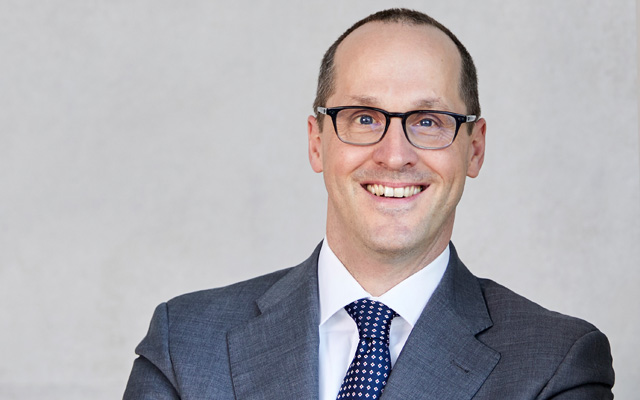Despite Asia-Pacific’s cautious approach to travel and tourism resumption relative to Europe and the US, Lufthansa Group continues to regard the region as an critical market and has maintained agility in ramping up services along with changes to border restrictions.
In an interview with TTG Asia during his recent business trip to Singapore, Stefan Kreuzpaintner, chief commercial officer with Lufthansa Group, emphasised the region’s importance – one where the group used to operate 253 weekly flights to 18 destinations pre-pandemic and where it has many important joint venture partners, specifically All Nippon Airways, Air China and Singapore Airlines.

Even with Asia-Pacific’s careful reopening, the group has been able to resume close to 30 per cent of its pre-pandemic frequency – with 71 weekly flights in operation today to 14 destinations.
Kreuzpaintner noted that travel demand is moving very closely with travel restrictions, with any easing of measures resulting in a spike in flight searches and bookings on all Lufthansa Group airline websites.
“Singapore’s Vaccinated Travel Lane (VTL) is a good example. As soon as the announcement was made in August 2021 about a VTL between Singapore and Germany, we saw demand kicked in,” he recalled.
“Therefore, as soon as markets reopened here in Asia-Pacific, we responded by putting capacity back in. Our flights serving China and India are fully packed – sold out – and we are prepared to bring in additional capacity.”
When asked if top source market rankings in the region would change post-pandemic, Kreuzpaintner said no; he expects India and China to “keep their weight and return to their original strength soon” after the pandemic, and acknowledges Singapore’s continued importance as a destination and source of origin”, especially with the successful implementation of the VTLs.
Besides responding swiftly to changing border conditions, the group has kept a prominent market presence in the region throughout the pandemic with help from its sales force.
Kreuzpaintner said the decision was a conscious one to ensure the group remains close to its travel agent partners – a community that has an even more important role to play in post-pandemic travel and tourism. The pandemic has altered the role of travel agents, he noted, moving them past ticketing functions to responsibilities in “providing travel counsel to their end customers and fulfilling important services”.
The group’s recovery also relies heavily on an organisation-wide transformation that was rolled out pre-pandemic and accelerated by the crisis.
According to Kreuzpaintner, a major achievement of the transformation was the group’s implementation of a capital increase on November 12 last year, which allowed it to exit its state subsidies.
“I think that is an enormous positive step for the company. While we are very appreciative of the support given to us by Germany and the state throughout the pandemic, we are glad to be able to refinance ourselves on the capital market,” he remarked.
The second milestone is the group’s fulfillment of a promise to keep more than 100,000 jobs amid tough cost-cutting measures deployed throughout 2021.
Lufthansa Group’s transformation also involves boosting its products and services. It has kept more than 650 airplanes post-pandemic and continues to invest in new aircraft. More than 170 airplanes are expected to join the fleet up to 2030, with all capable of serving longhaul and shorthaul routes.
“Our focus on offering premium products and services (have not wavered) during the pandemic,” Kreuzpaintner said, pointing to the reopening of its own First Class Terminal at Frankfurt Airport on September 1, recent introduction of a new catering concept for economy and business class products across all Lufthansa Group airlines, resumption of longhaul service in all seat classes, and a soon-to-launch business class product with the next delivery of its longhaul aircraft. The latter initiative will begin with Lufthansa and progress through other airlines in the group.
Kreuzpaintner observed that appetite for premium air travel has grown globally, with the “front of the cabin booked more than the rear of the cabin”. He explained that this could be driven by the robust return of corporate travel, a segment of the market that favours premium products, as well as a growing appreciation for more airport and inflight comforts during longer journeys.
“The one exception to this trend is in our flights to North Atlantic and the US – they are sold out across all cabins, especially after November 8 when the US reopened to European travellers,” revealed Kreuzpaintner.
In view of growing preference for premium products, the group will continue to evaluate seat and space configurations. For instance, all Swiss aircraft will have first class cabins in the future.
The group also continues to pursue a sustainable strategy in response to growing customer expectations for airlines to use sustainable fuel and to offer sustainable compensation in their booking flow.
It is now the largest sustainable aviation fuel (SAF) customer in Europe and second worldwide. In mid-November, the group secured US$250,000 worth of sustainable kerosene in order to meet the foreseeable increase in demand in the coming years.
This is the largest pure sustainability investment in the history of the group.
“We see the same expectations for responsible travel and sustainable air travel globally, be it in Asia-Pacific or Europe or the Americas. This is a good thing for our industry,” he said.
In identifying challenges to the group’s CO2-neutral travel approach, Kreuzpaintner said there needs to have the same sustainability measures and restrictions across the world – something the group is lobbying for – as well as greater access to SAF.




















